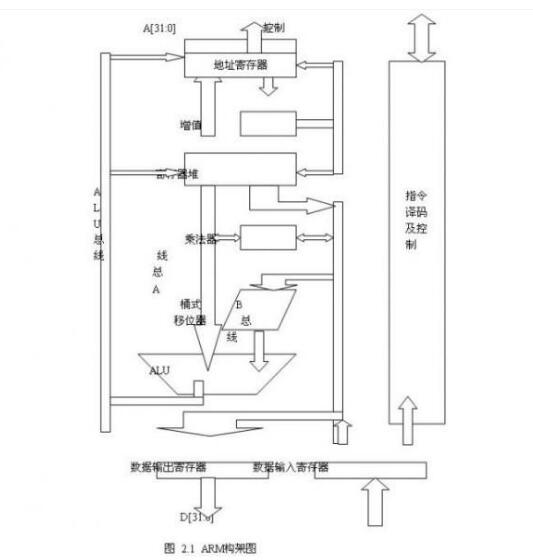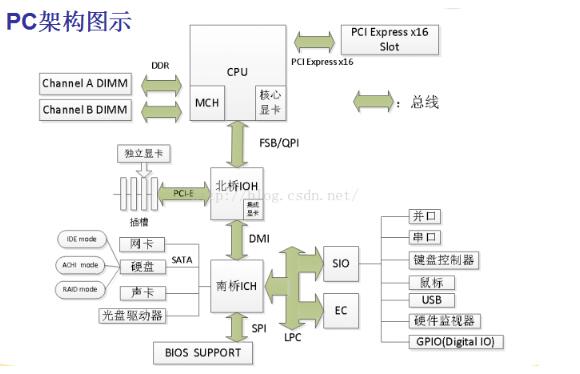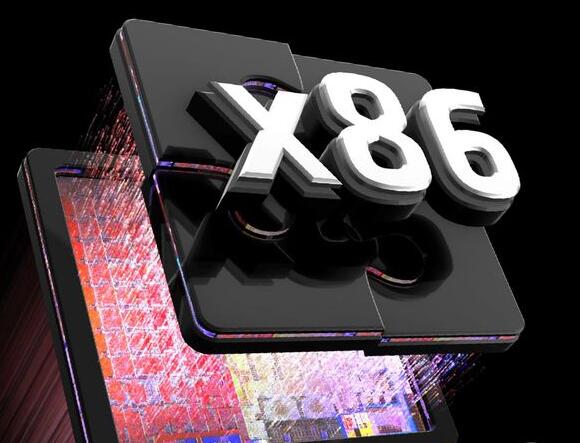This article mainly introduces the difference between the ARM architecture and the x86 architecture. First, the ARM architecture diagram is introduced. Then the x86 architecture diagram is introduced. Finally, the performance, expansion capability, operating system compatibility, software development convenience, and available tools are introduced. The five aspects of diversity and power consumption are a detailed comparison of the differences between arm architecture and x86 architecture.
What is the arm architecture?The ARM architecture used to be called Advanced RISCMachine (earlier: AcornRISCMachine) and is a 32-bit Reduced Instruction Set (RISC) processor architecture that is widely used in many embedded system designs. Because of its energy-saving features, the ARM processor is well suited for mobile communications and meets its main design goal of low power consumption.
Today, the ARM family accounts for 75% of all 32-bit embedded processors, making it one of the largest 32-bit architectures in the world. ARM processors can be seen in many consumer electronics products, from portable devices (PDAs, mobile phones, multimedia players, handheld video games, and computers) to computer peripherals (hard disks, desktop routers) and even He has his presence in military equipment such as missile missile-mounted computers. There are also derivative products based on ARM design. Key products include Marvell's XScale architecture and TI's OMAP family.
ARM architecture diagramThe following figure shows the ARM architecture diagram. It consists of a 32-bit ALU, several 32-bit general-purpose registers and status registers, 32 & TImes; 8-bit multipliers, 32 & TImes; 32-bit barrel shifter, instruction decode and control logic, instruction pipeline, and data/address registers.
1. ALU: It has two operand latches, adders, logic functions, results, and zero detect logic.
2. Barrel shift register: 32-bit barrel shifter is used by ARM. This can be done by shifting left/right n bits, shifting n bits, and arithmetically shifting n bits.
3, high-speed multipliers: multipliers generally use "plus a shift" method to achieve multiplication. In order to improve the computing speed, ARM uses a two-multiply method to implement “add-shift†operations based on the 2 bits of the multiplier. The ARM high-speed multiplier uses a 32-bit TIMER 8-bit structure so that the integration can be reduced. The corresponding chip area is less than 1/3 of the parallel multiplier.
Floating-point components: Floating-point components are used as an option for ARM architectures. The FPA10 floating-point accelerator is connected to the ARM as a co-processing method and executed through the interpretation of the co-processing instructions.
5, controller: ARM controller uses a hard-wired programmable logic array PLA.
6, register

The vast majority of the current PC architecture is Intel's X86 architecture, seemingly because of INTEL's X86 architecture has long been the current INTEL position. The X86 architecture is a set of computer language instructions executed by a microprocessor. It refers to the standard number abbreviations of a series of intel general computers and also identifies a set of general computer instructions.

Of course, not all of the architecture diagrams are the same. According to different motherboards and platforms, the architecture is slightly different. For example, at present, many motherboards have integrated the Northbridge into the CPU and integrated the southbridge into the PCH, but roughly The framework is still the same. Below are some brief introductions to each content on this architecture diagram.
1: CPU, everyone is no stranger to the term, the central processor, the computer's core brain.
2: North Bridge Chipset: The North Bridge is a chip on the motherboard of the computer. It is located at the edge of the CPU socket and serves as a connection.
3: The South Bridge is an important part of the motherboard chipset. It is usually located on the motherboard far below the CPU slot, near the PCI slot. This layout is based on the I/O it is connected to. More buses, farther away from the processor, facilitate wiring.
4: Memory is one of the important components in the computer. It is a bridge to communicate with the CPU. All programs in the computer are run in memory, so the memory performance has a great impact on the computer.
5: Video card (Graphics card) full name display interface card, also known as display adapter, is the computer's most basic configuration, one of the most important accessories.
6: Display j interface
7: The network card is a network component that works on the link layer. It is an interface connecting the computer and the transmission medium in the LAN. It can not only achieve the physical connection and electrical signal matching with the LAN transmission medium, but also involves the sending and receiving of frames and frames. Packaging and unpacking, media access control, data encoding and decoding, and data caching features.
8: The basic function of the sound card is to convert original sound signals from microphones, tapes, and optical discs to output sounds such as headphones, speakers, amplifiers, tape recorders, etc., or to make musical instruments sound wonderfully through MIDI.
9: SATA (Serial Advanced Technology Attachment) is an industry-standard serial hardware driver interface. It is a hard disk interface specification jointly proposed by Intel, IBM, Dell, APT, Maxtor, and Seagate Corporation.
10: The hard disk is one of the computer's main storage media and consists of one or more aluminum or glass disks. The disc is covered with ferromagnetic material.
11: Bus
What is the difference between arm architecture and x86 architecture?First, performance
The X86-based computer is much faster and stronger than the ARM-based system in terms of performance. X86's CPU is easily 1G or more, dual-core, quad-core popular, usually using 45nm (or even higher) process technology for production; and ARM: CPU is usually a few hundred megabytes, recently appeared about 1G of CPU, the process is usually used The process of less than 65nm process can be said that ARM is not the opponent of X86 structural system at all in performance and production process.
But the advantage of ARM is not that its performance is powerful but it is efficiency. ARM uses the RISC pipeline instruction set, and it is simply at a disadvantage in completing comprehensive work. In some relatively fixed applications, its advantages can be fully displayed.
Second, expansion capabilities
The X86-based computer uses a "bridge" approach to connect to expansion devices (such as hard disks, memory, etc.), and the x86-based computer has been in existence for nearly 30 years. It has many types of extended equipment and the price is relatively low, so x86 Structured computers can easily scale performance, such as adding memory, hard disks, and so on.
The ARM-based computer uses a dedicated data interface to connect the CPU to the data storage device. Therefore, it is difficult for the ARM to perform storage and memory performance expansion (generally, the memory and data storage capacity of the ARM have been fixed during product design). Therefore, ARM is used. Structured systems generally do not consider extensions. The basic principle of "enough to use is good" is followed.

Third, the operating system compatibility
The X86 system is dominated by Wintel Alliance built by Microsoft and Intel. It has monopolized the personal computer operating system for nearly 30 years, forming a huge user base, and also deeply solidifying the habits of many users. At the same time, the x86 system has been developed in hardware and software. To form a unified standard, almost all x86 hardware platforms can directly use Microsoft's Windows system and almost all the tool software now popular, so x86 systems have unparalleled advantages in terms of compatibility.
Almost all ARM systems use Linux operating systems, and almost all hardware systems must be built on their own system, and are incompatible with other systems. This also results in the inability of their application software to be portable. This has always severely restricted the ARM system. The development and application. After the development of the open Android system, GOOGLE unifies the operating system of the ARM-based computer, making the new ARM-based computer system have a unified, open, free operating system, providing powerful development for ARM. Support and motivation.
Fourth, the convenience of software development and the diversity of tools that can be used
The system of X86 architecture has been introduced for nearly 30 years. During this period, the golden period of rapid development of x86 computers, the user's application, software support, and the matching and compatibility of software development tools have reached a very mature or even perfect level. realm. So using X86 computer system not only has a large number of third-party software options, there are a large number of software programming tools to help you complete the work you want to complete.
Due to the constraints of hardware performance, streamlining of the operating system, and compatibility of the system, Arm-structured computer systems cannot cause the Arm-structured computer system to have as many programming tools and third-party software options as the X86 computer system. For use, ARM's programming languages ​​mostly use C and JAVA.
Comparison of this point, the more direct conclusion is: Based on the x86 structure of computer system platform development software than arm structure system is easier, simpler, the actual cost is lower, and easier to find third-party software (free development time And cost), and software migration is easier.
From the above comparative analysis, gave us a very clear feeling, ARM and X86 structure of the computer can not be compared at all, ARM is simply not an opponent of the X86 computer. Yes, if you only consider the above several aspects, ARM really can not compete with X86 computers, and even no comparison of qualifications. But in the past one or two years, ARM's products have seen rapid development in terminal applications, especially handheld terminals (such as: smart phones, tablet computers, etc.), and its sales volume has far exceeded the sales volume of computers with x86 architecture. It can be seen that ARM has its own Incomparable advantages with X86 architecture computers. The advantage is: power consumption.
V. Power consumption
The X86 computer is considering the need to adapt to a variety of applications. Its development strategy is: performance + speed. For more than 20 years, the speed of x86 computers has grown from a few M of 8088 to just a few G, and it is still a few cores. Its speed and performance have been improved by thousands or thousands of times. Technological advances make x86 computers an indispensable part of the public life. Part. However, the direction and mode of development of x86 computers have kept their power consumption high. A computer is just a few hundred watts. Even a laptop or netbook known as low-power and energy-saving can have more than ten or twenty watts of power. Consumption, which can not be compared with ARM-structured computers.
Guangdong Ojun Technology Co., Ltd. , https://www.ojunconnector.com